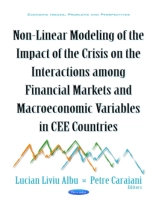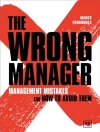Following the last economic and financial crisis, there is strong motivation for academics to better explain the connection between the stock market and the macroeconomy. This book aims at fulfilling this need with an accent on the case of emerging markets in Central and Eastern Europe. The book generally focuses on nonlinear techniques. The book consists of several chapters, each using state-of-the-art techniques in modeling that address specific issues related to the focus of the book. The topics range from studying the transmission mechanism of monetary policy in CEE economies, to issues like the impact of quantitative easing on the emerging markets or network based approaches that advance our understanding of the financial relationships in these markets. The book also includes a paper on the wavelets modeling of the relationship between uncertainty and equity premium. Given the nature of the CEE economies, i.e. aspiring Euro Area members, a special chapter is dedicated to convergence issues and the nonlinear relationship between economic growth and finance. Overall, in the present context of the post-financial crisis, this book constitutes a step forward in the modeling of the linear and nonlinear relationships between the financial markets and the macroeconomy, especially in an unstable context and for the particular case of emerging economies.
Lucian Liviu Albu & Petre Caraiani
Non-Linear Modeling of the Impact of the Crisis on the Interactions among Financial Markets and Macroeconomic Variables in CEE Countries [PDF ebook]
Non-Linear Modeling of the Impact of the Crisis on the Interactions among Financial Markets and Macroeconomic Variables in CEE Countries [PDF ebook]
Achetez cet ebook et obtenez-en 1 de plus GRATUITEMENT !
Format PDF ● Pages 144 ● ISBN 9781634849647 ● Éditeur Lucian Liviu Albu & Petre Caraiani ● Maison d’édition Nova Science Publishers ● Publié 2016 ● Téléchargeable 3 fois ● Devise EUR ● ID 7226699 ● Protection contre la copie Adobe DRM
Nécessite un lecteur de livre électronique compatible DRM












